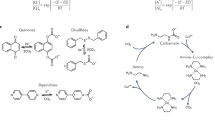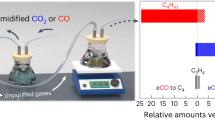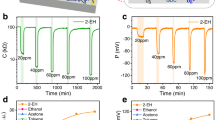Abstract
WHEN mixtures of carbon monoxide and air in varying proportions are exploded in a closed vessel under similar initial conditions of pressure, temperature, and moisture content, experiments show that the greatest explosion pressure occurs when the proportion of carbon monoxide to oxygen in the mixtures is greater than 2. Messrs. Fenning and Tizard, in their paper on the dissociation of carbon dioxide at high temperatures in a recent number of the Proc. Roy. Soc., assume that chemical equilibrium is established by the time the maximum pressure is reached in explosions and attribute this phenomenon entirely to temperature dissociation of carbon dioxide. They then proceed to make estimates of the dissociation of carbon dioxide as a function of temperature from explosion experiments in which the “airs” used were enriched with oxygen so as to develop higher temperatures.
This is a preview of subscription content, access via your institution
Access options
Subscribe to this journal
Receive 51 print issues and online access
$199.00 per year
only $3.90 per issue
Buy this article
- Purchase on SpringerLink
- Instant access to full article PDF
Prices may be subject to local taxes which are calculated during checkout
Similar content being viewed by others
Author information
Authors and Affiliations
Rights and permissions
About this article
Cite this article
DAVID, W. The Dissociation of Carbon Dioxide at High Temperatures. Nature 120, 157 (1927). https://doi.org/10.1038/120157b0
Issue date:
DOI: https://doi.org/10.1038/120157b0
This article is cited by
-
Disintegration of Carbon Dioxide Molecules in a Microwave Plasma Torch
Scientific Reports (2015)



